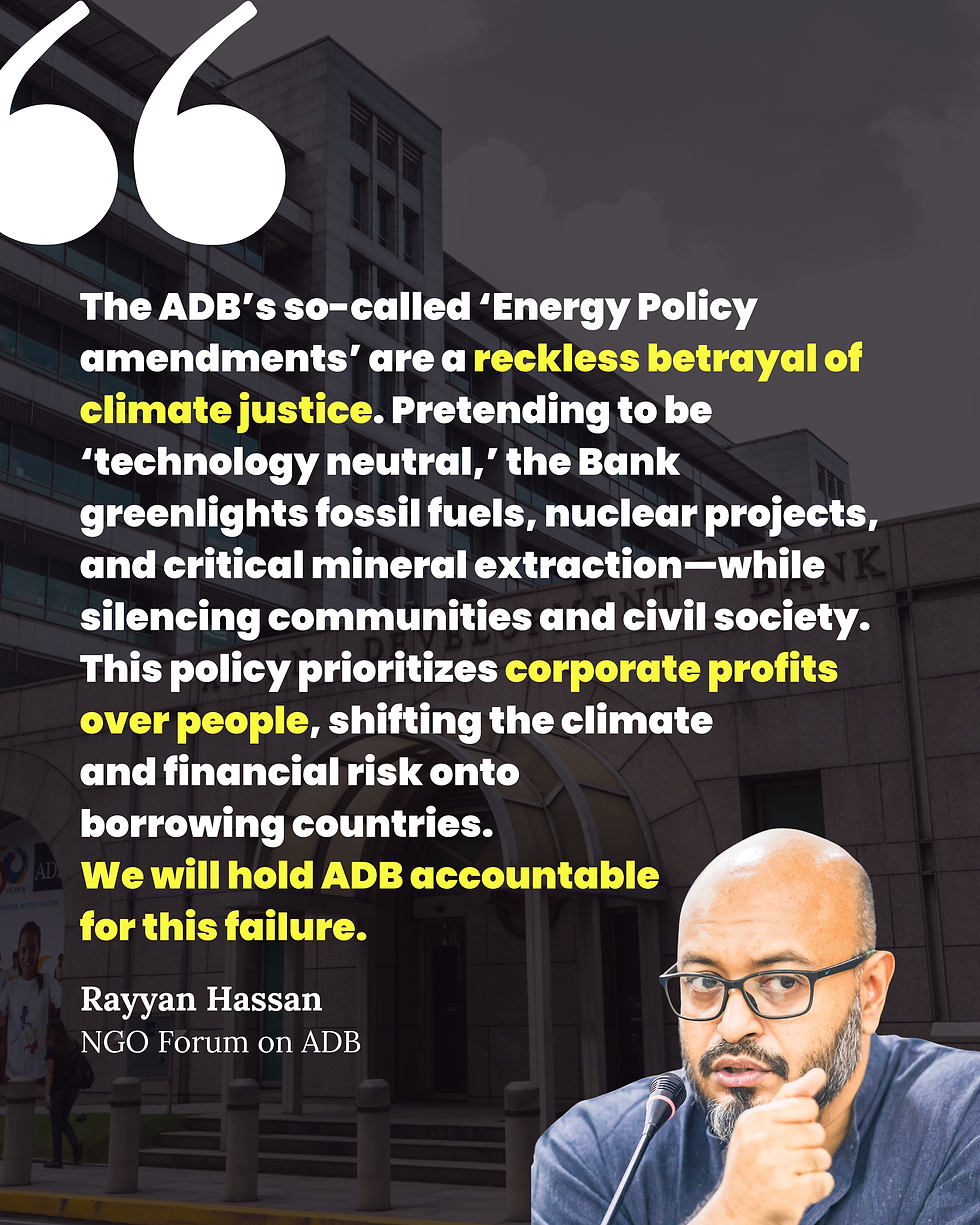Is the MWSP water tight?
- NGO Forum on ADB

- Mar 26, 2016
- 3 min read
Updated: Jan 13, 2019

When the Melamchi Water Supply Project (MWSP), a project co-funded by the Asian Development Bank (ADB) was proposed it was meant to “…alleviate the chronic water shortage in Kathmandu Valley on a sustainable, long-term basis”, but as of the moment what the project did was to promote social injustice, involuntary replacement and environmental problems.
The MWSP was supposed to be an inter-basin river project that will divert 170 million liters of water per day from Melamchi River to Kathmandu through a 26.5-kilometer tunnel. Prior to the conception of the project, various studies showed that the MWSP is not necessarily the best option since there are several other options within Kathmandu Valley. The ADB and other donors have ignored these possibilities. According to Water expert Dipak Gyawali of the Nepal Water Conservation Foundation with Kathmandu’s population growth rate, no river would be able to meet the water supply demand of its people. So why proceed with the project?
70% of the water in the mains is lost due to leakage from ageing pipes or pilferage. Gyawali stated that the problem is not so much the scarcity of water, but poor water management and wasteful distribution.
The people of Kathmandu are now faced with the possibility of potable water that is very costly, the minute a foreign private operator or private management handles the water supply system.

There is also the question of the public participation and consultation provision of the Environmental Impact Assessment (EIA). The lack of transparency and democratic process involved in the implementation of the road survey, land acquisition, compensation, resettlement, and the Social Upliftment Programme (SUP) was voiced out by the locals particularly the ethnic Tamang communities, who expressed their desire to participate in the SUP, and wishes it to be thoroughly discussed, designed and implemented with their FULL consent. The Indigenous tribe of Hyolmo also cried foul when the idea of relocation was discussed.
The EIA of ADB and other concern financing agencies failed to study and incorporate all the environmental/ecological impacts of MWSP on the local ecology and people’s livelihoods. It is not environmentally sound. The construction of the tunnel in between the mountain will cause irreparable loss to the surrounding environment, disrupting its natural state. There is also the lack of adequate arrangement for the continuing access and management of affected forestland.
MWSP also affects Melamchi’s agricultural system due to the construction of access roads through the most fertile land. Three problems arose from this part of the project:
There is a loss of small and large-scale irrigation canals after the diversion of the river.
A large portion of the farmlands has been affected by road construction and this impacted adversely food security, as well as the local ecology and biodiversity.
Involuntary resettlements of the locals that has been grossly arbitrary.
The project failed to provide adequate compensation and relocation.
The program has failed to address the local needs, their priorities and the democratic process.
Two of the most affected communities is the Tamang, that suffers from worsening social and economic conditions and cultural exploitation and the Majhi ethnic community whose primary livelihood is fishing.
The MWSP has promoted social injustice; the project will benefit only 10 percent of country’s population, but all Nepalese will shoulder the burden of debt.
Sources:
http://developmentdebacles.blogspot.com/2008/02/controversies-continue-to-plague.html
Photos Credits to:
Written by Jen Derillo. Jen is NGO Forum on ADB's Program Coordinator for Communications.



